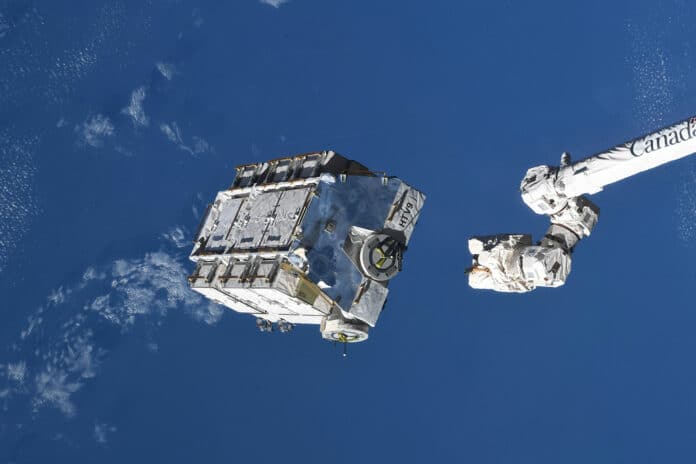A nearly 3-ton Exposed Pallet 9 (EP9) is currently nearing its plunge toward Earth. This pallet was jettisoned from the International Space Station in March 2021, making it the most massive object ever tossed overboard from the space station.
Disposing of used or unnecessary equipment in such a way is a common practice aboard the space station, and the objects usually burn up harmlessly in Earth’s atmosphere.
EP9 is loaded with old Nickel-Hydrogen batteries, NASA explained at the time it was jettisoned. It also stated that the EP9 had a mass similar to a large SUV, and it was predicted to reenter Earth’s atmosphere within two to four years.
The EP9 was transported to the ISS via Japan’s HTV-9 (Kountori 9) on May 20, 2020, and was carrying six Lithium-Ion battery Orbital Replacement Units (ORUs) that replaced existing ISS Nickel-Hydrogen batteries during an astronaut spacewalk.
The European Space Agency (ESA) Space Debris and Independent Safety Offices are monitoring the reentry of the pallet of used ISS batteries and calculating the estimates for the time and location of the reentry. The batteries, nine in total, will undergo a natural reentry into the Earth’s atmosphere between March 8 and 9, 2024.
The total mass of the batteries is estimated to be around 2.6 metric tonnes. Most of the batteries are expected to burn up during reentry, but there is a slight possibility that some parts may reach the ground. However, the likelihood of a person being hit is very low.
The reentry is expected to occur between -51.6 degrees South and 51.6 degrees North, but due to fluctuating levels of atmospheric drag, there are some uncertainties that make it difficult to make more precise predictions at this time. The concerned region can be geographically constrained as we get closer to the expected reentry window.
The European Space Agency (ESA) is closely monitoring a large space object and is providing its Member States with the latest predictions for the reentry time and location.
A large space object reenters the atmosphere naturally almost every week, and most of the associated fragments burn up before reaching the ground. Most spacecraft, launch vehicles, and operational hardware are designed to minimize the risks associated with natural reentry.
